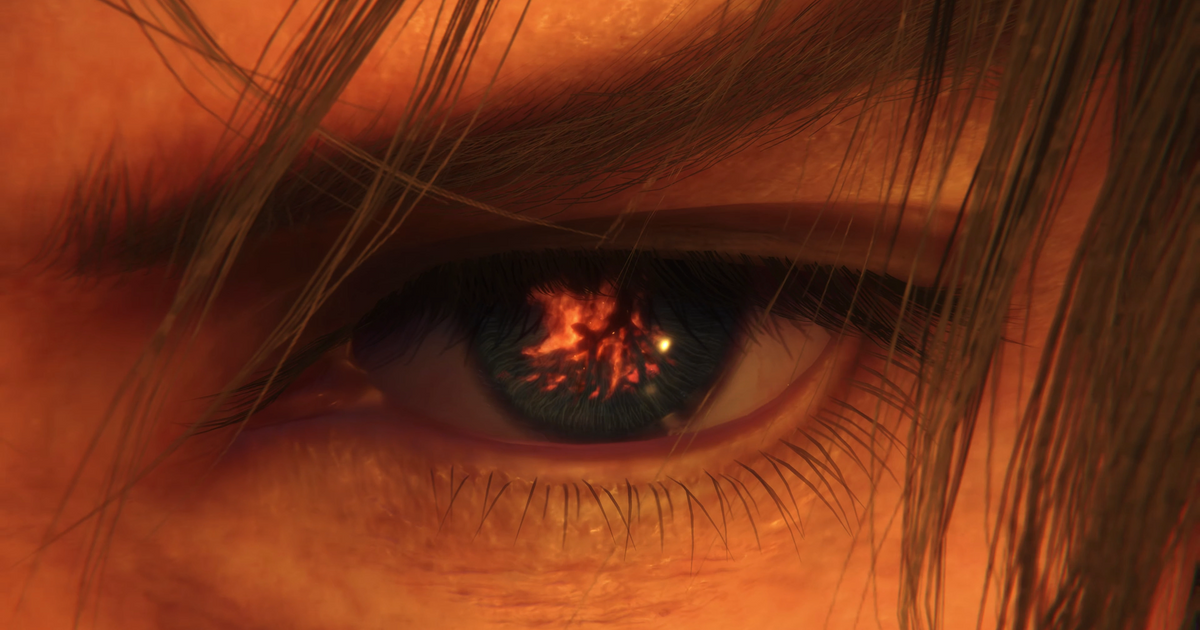Despite being numbered entries, Final Fantasy has thrived in just how distinct every game manages to make itself. Though they all hold the core of their world and theology, the themes and even aesthetics change. This has managed to keep it fresh for all these years.
Though Final Fantasy XV's reception was left rather contentious and games like Stranger of Paradise and Forspoken have left a poor taste in fans' mouths, the charm of Final Fantasy XVI is undeniable. We recently got the chance to play a few hours from throughout the game, and I can't wait to sink another hundred hours in.
Final Fantasy XVI has had quite a long development cycle, with it being conceptualised back in 2015, this tension didn't pop its head up in the opening hours, with relationships and gameplay systems that have plenty of room to grow.
Building a world
Final Fantasy XVI is heavily inspired by high fantasy with castles, great beasts, and magic. This being said, it combines this with the traditional Final Fantasy mythos, Greek-style god designs, and a sprinkling of different ideas. It is eclectic, but not in a way that interrupts itself. It works surprisingly well to provide a world that is familiar to returning fans but big enough to encourage you to explore it.
Playing as Clive, the son of royalty, you don't quite feel like the main character. Your father is the just and kind leader of your castle - granted special powers that are defined by his blood. Anticipated to receive the same great powers, you are rejected and your younger brother, Joshua, is a Dominant: someone capable of controlling great mythological beasts.
Outside your small kingdom, The Blight grows. This decaying process threatens to destroy mankind. Multiple nations are in conflict to control the aether and put themselves on top. In this way, there is a big political backdrop to the game but it was left largely unexplored in my time with the game.
The politics of communication
When a horrible fate befalls your kingdom, you are left serving a crown you don't support, looking to take revenge on those who have wronged you. Though you largely know this will happen within minutes of the game, Final Fantasy XVI does a pretty good job of telling a story we already know.
Characters feel personable and raw, whilst promoting that bombastic bravado that Square Enix characters are known for. It doesn't feel particularly subtle but there's a lot of joy in this choice. It feels confident and isn't afraid to throw big fights and long dialogue at you in response.
Final Fantasy XVI feels nostalgic but not in a way that is manipulative. The music is mostly orchestral and incredibly lush, using older motifs and themes and transposing them into something new. As well as this, they feel dynamic, getting more violent in battle and softer in those more peaceful moments.
Everything, from roaring flames to muddy landscapes, is so distinctly pretty. As has always been the case for Final Fantasy, cutscenes really show off how great everything can look. Luckily, the fluidity of combat doesn't detract from the colours in front of you.
In Motion
Regularly moving from standard combat to full-on cinematics, Final Fantasy XVI's combat is very impressive. Everything is smooth and flows together, with enough depth to give a skill ceiling. Throughout the game, you develop affinities for central elements and this gives you a handful of attacking abilities that require a cooldown time.
This means you are incentivised to regularly swap up your playstyle and try out new attacks. This doesn't just come out in attacks though: evasive abilities and even parry mechanics look different depending on your element of choice. These all come with different skill ceilings and work for different enemy types.
You are constantly encouraged to flit around the battlefield, using a blink strike to get in quick and AOE attacks to keep enemies at bay. You can opt to dodge away from attacks, making sure to save your health or you can parry hits, guaranteeing a counterattack. Almost every element of combat is designed to be approachable at lower levels and complex at higher levels. You can engage with it at your own skill level.
Loading your loadout
If you don't like the timing of dodges and parries, the game comes with rings you can equip, turning them into QTEs, making it much more forgiving. Unfortunately, this could be seen as an accessibility option locked behind a loadout. It's smart but means those who require it will never have the most advanced loadout.
As well as this, in my handful of hours with the game, I saw little reason to search chests if they were hidden. Loot was rarely worth the extra time, providing small and relatively meaningless increases to your Gil pile. Fundamentally, Final Fantasy XVI, from what I've played, feels like a more linear game than the last main entry.
You do get given side quests and these can take you back through areas you've explored, but things feel more focused this time around. I think I'll miss just how open Final Fantasy XV is, but there's a certain magic here that I just can't wait to spend more time discovering.
Explore new topics and discover content that's right for you!






